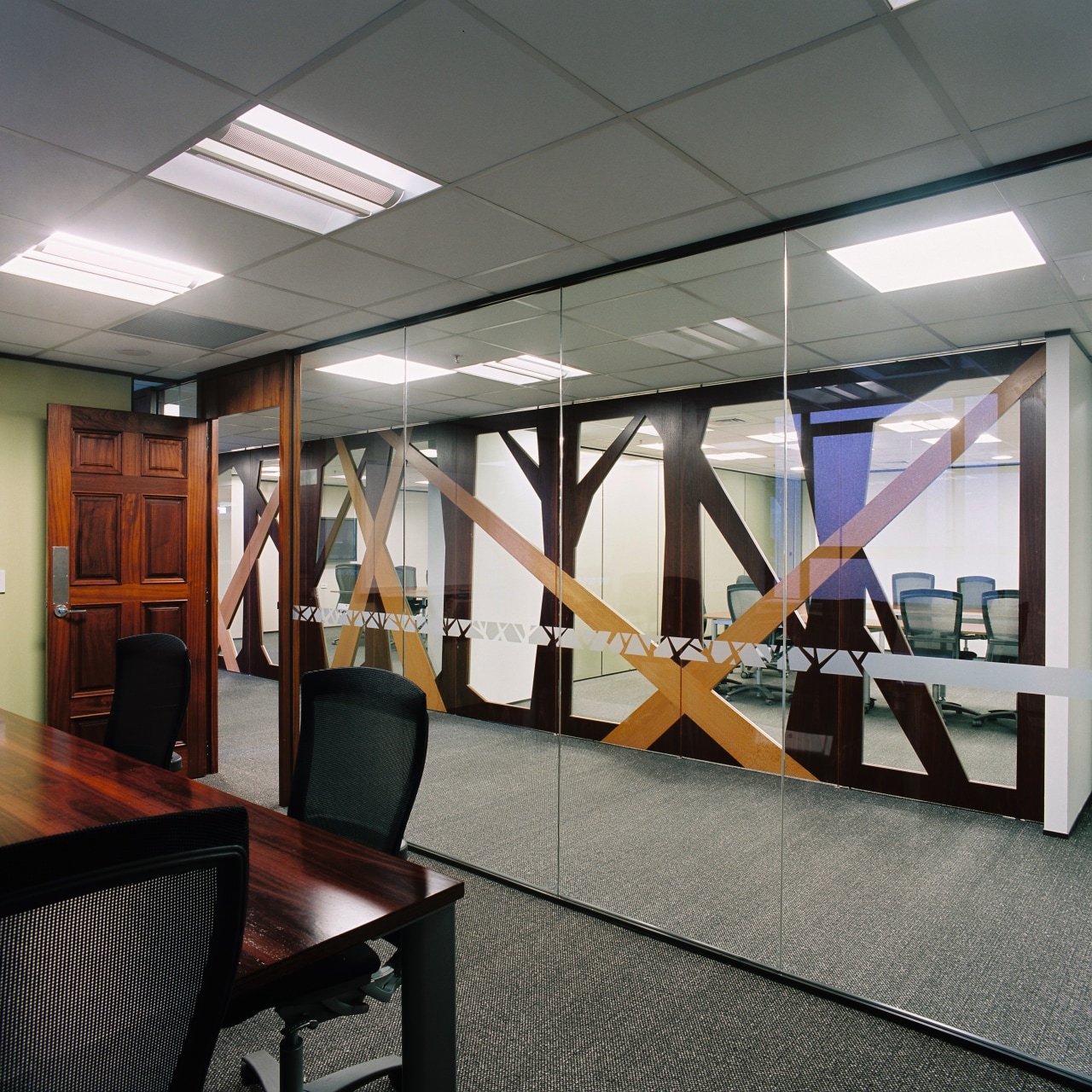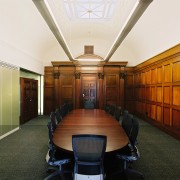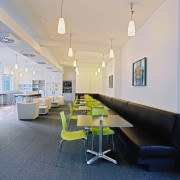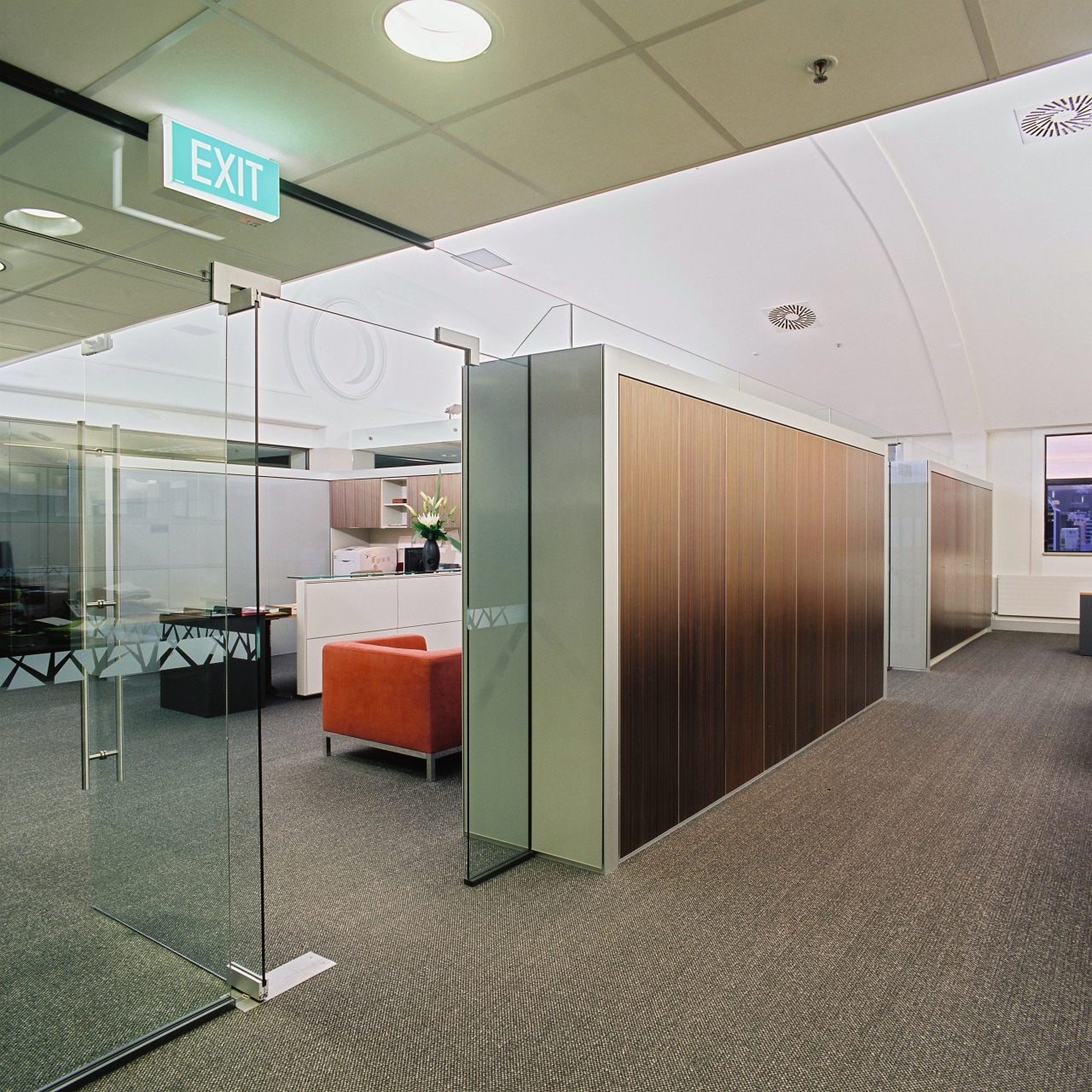Classic meets contemporary
A respect for the past and design elements for the present both feature in new Department of Building and Housing offices nestled in Wellington's historic AMP building
IT MAKES sense for a government department focused on New Zealand's building and housing to occupy a building that is itself a standing testament to our architectural history. An important aspect of a fit-out, however, can be finding a balance between celebrating the past and introducing contemporary, comfortable office architecture.
The owners of Wellington's historic AMP building recently undertook a building upgrade that re-emphasised its architectural origins as well as bringing it up to speed with current architectural safety standards. At the same time, the new principal tenant, the Department of Building and Housing, made a similar move to clear out the architectural insertions within its tenancy that had accumulated since the building's 1920s construction.
Architectural firm Custance stripped back the upper five floors of the eight-level building, leaving only original or accurately sympathetic features. The brief also called for the creation of a lively, forward-looking office environment within this context. Designer Steve Toomath says there were several facets to the job, from three levels of new office space, to the sixth-level meeting rooms and reception area and the reinvented cafeteria on the top floor.
"The move to these offices involved a coming together of disparate groups, and a sense of collective identity for the client was important. Throughout these five floors, design emphasis was given to reflecting the department's industry role," says Toomath. "With timber a major construction element in New Zealand, this is used in a number of creative, linking forms throughout, including perforated plywood panels, a woven ply feature wall, hard flooring for the cafeteria and veneer table tops."
In addition, original wood panel doors were removed when the spaces were cleared then reinstated. A feature retractable wall on one of the sixth-floor conference rooms also uses timber to particularly striking effect.
This came about from the client requiring a flexible meeting and training space which could be opened up for larger functions when required. The layout dictated an internal room with an operable wall of glazed panels to admit light. Framing these panels in MDF skinned with timber veneer made for a functional design feature that integrated the space with adjacent timber panels and doors. The doors feature imagery of forest trees, a primal source of shelter and a basic building material.
"Using two tones of timber veneer brings a sense of dimension and heightens the doors' impact, suggesting light shafts falling through a forest," says Toomath. "The irregular shapes minimise the impact of the repetitive door module, and also provide a degree of privacy for the meeting room."
A lamination fabrication technique was used to avoid the need for glazing bead, whereby the glass core is sandwiched between the two outer skins.
"This was something of a technological feat," says the designer. "First, veneered skins were applied to MDF sheet. These were then cut to profile by computer numerical control (CNC) machinery driven by programmes prepared from elevation drawings. The frames were then laminated together, sandwiching the glass in between."
Once the lamination was complete, edges were finished by applying veneer and solid timber edgings. The doors were then fitted with hardware and delivered to the site for installation.
"We also retained an existing boardroom on this level that features wood to equally dramatic, if very different, effect. This was possibly built in the 1970s, but with a strong 1920s wood panel ambience," he says. "To avoid an overtly dark, masculine feel, we removed two walls of the room's panelling, opening the space to daylight from newly revealed exterior windows. Modern uplighting was also added, highlighting the feature wood panels and original ceiling."
An implied history is brought to the department by maximising these classic elements, which include an original vaulted ceiling. This curved feature contributes to a voluminous space that allows the contemporary and traditional to sit comfortably side by side. The same attention to past glories follows through on all levels of the fit-out.
The third, fourth and fifth floors were also completely stripped out by Custance, with areas of false ceilings removed to restore these levels to their original impressive stud. This gave the new open-plan offices an airy, spacious feel, reducing the scale of the large, open floorplate and revealing traditional cornices and mouldings that had long been obscured. The removal of these ceilings also allowed the full extent of the original windows to see daylight, increasing the natural light levels and restoring their symmetry and full historic presence.
Injecting a modern sense of vibrancy was another client ask. The designer therefore punctuated the largely white office partitioning on these floors with colourful Plexiglass panels in purple, green and orange. These bright splashes are repeated with slightly different emphasis on all three levels.
"The coloured panels have a certain way-finding utility in open spaces that might have over 70 to 80 workstations laid across them but they largely contribute a visual dynamic," says Toomath. "The contemporary elements of this interior stand alongside retained original elements without competing for attention the result is a relaxed, respectful space."
Credit list
Client
Project management (building)
Construction company (fit-out)
Flooring
Paint
Executive suite
Reception furniture
Meeting room furniture
Joinery
Kitchen equipment
Interior designer
Project management (fit-out)
Tiling
Wallcoverings
Office chairs
Workstations
Kitchen/breakout room furniture
Conference/training room
Filing cabinets
Story by: Trendsideas
Home kitchen bathroom commercial design










